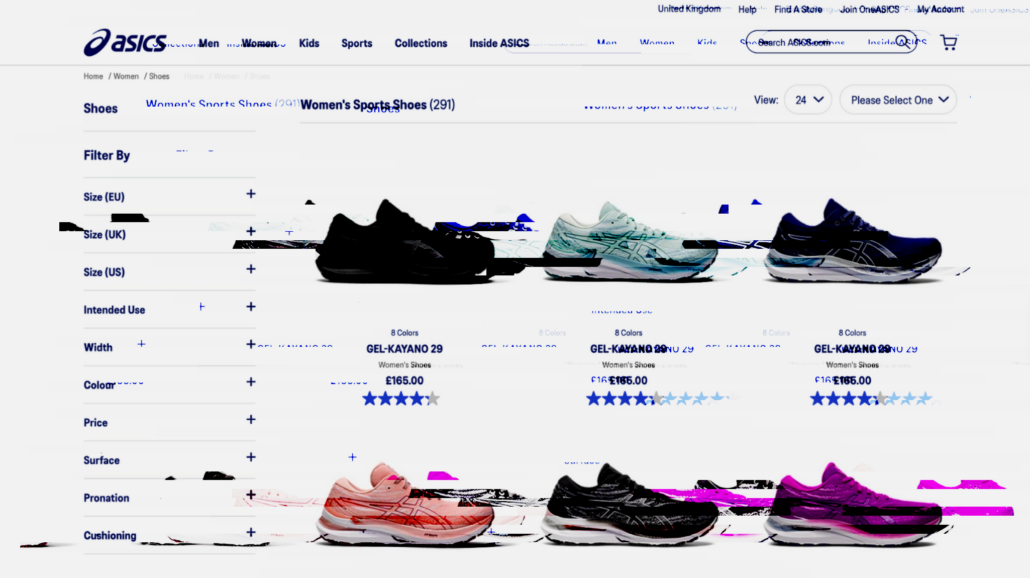Top of funnel content ideas that generate customers

In today’s highly competitive ecommerce landscape, attracting new customers and expanding your market is critical to the success of your business.
That’s where top of funnel content comes into play.
In this article, we’ll take a closer look at what top of funnel content is, why it’s so important for ecommerce sites, and provide some tips and strategies for creating effective top of funnel content that will help you grow your customer base
What Is Top of Funnel Content?
Before we look at what top of funnel content is, we first need to look at the wider marketing funnel as a whole. A marketing funnel is a visual representation of how businesses can turn strangers into customers.
A marketing funnel can be split into 3 main stages: Awareness, Consideration and Conversion.
Top of funnel content sits in the awareness stage as it’s designed to attract and engage new customers with a brand and its products.
Users would read top of funnel content to gain awareness and understanding of a topic, product or service, and to find solutions to their problems or needs at the beginning of their decision-making process.
In the given hypothetical example, a customer is looking for a garden office building to improve productivity while working from home. At this stage, they might not be aware of the various types of garden buildings available, the features they offer, or even how a garden building can improve their productivity. This is where top of funnel content comes in.
A garden building website can create articles that provide useful information and educate the customer about the benefits of garden buildings, particularly garden office buildings, in improving productivity.
Some example content ideas in this scenario can include
» Read more about: Top of funnel content ideas that generate customers »
Google algorithm updates: the past, the present & the future

These days, it seems like Google releases a significant algorithm update every two minutes. The SERPs always change, SEO professionals are constantly scrambling to figure out what’s going on, and Google continues to wheel out the “just make better content” statement each time.
So, what is actually happening? Where do we go from here? And does each page need to be precisely 2,146 words with a 3% keyword density and 14 DA 50 or above links to rank?
In this blog, we’ll go through a selection of Google’s major algorithm updates over the years, break down the key trends and use that information to try to figure out what those mischievous devs up in Google Towers will do next.
Google’s early years
During Google’s early years, algorithm updates were a rare event rather than part of the constant cycle we have now. There would be one or two updates to the SERPs a year followed by months of silence. Between 2003 and 2010 we got just six updates:
- Florida (2003)
- Jagger (2005)
- Big Daddy (2005)
- Vince (2009)
- Caffeine (2009)
- MayDay (2010)
2003’s Florida was the first big Google update and the first sign of what was to come over the next few years. Tactics such as keyword stuffing, hidden text and hidden links were targeted, and we saw the state of the SERPs change dramatically overnight.
This was followed over the next few years by a handful of updates designed to contribute continuous small improvements –
» Read more about: Google algorithm updates: the past, the present & the future »
How To Get the Most Out of Attending An Ecommerce Conference

Attending eCommerce conferences are one of the best ways to keep up with eCommerce trends, emerging technologies, and smart techniques to get more customers to visit your online store. But if you’re going to an eCommerce event, don’t make the mistake of just sitting back and listening. Attending conferences provides a unique opportunity to learn, network, grow and debate while also having your specific questions and issues answered by panels of experts.
And this is why it’s so important to make a plan to get the most out of attending an eCommerce conference,
Going into a conference with no plan of action can leave you feeling deflated afterwards. Coming away feeling like you didn’t learn everything you wanted or that you missed networking opportunities because you were too tired can make it feel like a missed opportunity. So let’s get an action plan sorted!
» Read more about: How To Get the Most Out of Attending An Ecommerce Conference »
5 Ecommerce SEO speakers to look out for in 2023

Search Engine Optimisation (SEO) is a top priority for every eCommerce professional today. But with an endless jungle of information to navigate through, and guidelines that seem to change in the blink of an eye, a little guidance goes a long way when looking to optimise your eCommerce site for traffic and visibility. And this is why it’s so helpful to hear from expert SEO speakers, who understand how to elevate eCommerce brands.
Whether you’re looking for a helping hand to guide you through the SEO process, a nudge in the right direction, or you simply want to stay in the loop with what’s going on in the industry, hearing from established experts gives you a shortcut to all the latest insights and learning. We have compiled a list of notable and emerging eCommerce/SEO speakers to keep an eye out for this year to help you get started, with a focus on upcoming events in the UK.
» Read more about: 5 Ecommerce SEO speakers to look out for in 2023 »
How to handle faceted navigation for search engines

Filters and faceted navigation are one of the most intuitive ways for visitors to your eCommerce website to narrow down through potentially thousands of goods. But using filters can also cause a lot of headaches from an SEO perspective. Without the right handling, faceted navigation can cause a whole host of issues for websites – crawl bloat, duplicated content, and thin content too, which can all lead to traffic loss.
Let’s look in more detail at what faceted navigation is, and how to use it without undermining all your hard SEO work!
What is faceted navigation?
» Read more about: How to handle faceted navigation for search engines »
Introducing Re:commerce – our 1-day SEO conference

We’re delighted to announce that on 10th March next year, we are running a 1-day eCommerce SEO conference in London!
This will be hosted at the stunning Ham Yard Hotel, and we’ve been working very hard to secure what is an incredible line-up of 15 speakers, 5 breakout session leaders, 4 moderators, 1 emcee and a partridge in a pear tree…
I genuinely believe we’ve curated the conference line-up of our dreams, and we’re very proud to share this with you.
Keynote speakers:
- Rory Sutherland: I first saw Rory speak live at an A4U Affiliate Marketing event about 12 years ago. I’m showing my age a little here… At the time, it was the best talk I’ve even seen live, he was captivating. It still hasn’t been topped yet!
» Read more about: Introducing Re:commerce – our 1-day SEO conference »
How to Analyse Brand & Non-Brand Organic Traffic

Reporting on organic traffic is one of the most fundamental metrics in SEO. It is one of the key indicators on how your site is performing and informs the recommendations that are a part of your overall strategy. However, one of the most basic missing elements to our traffic data is how much of our organic performance is based on queries that are brand related or from non-brand related terms.
This guide will show you:
- How to extract search Google Search Console query data directly into Google Sheets using the Search Analytics for Sheets extension
- Segment the data into brand and non-branded traffic
- Present the data in a way that is most useful to you and your clients.
Knowing how much of our traffic is brand or non-branded can be essential in deciding your SEO strategy moving forward. If there is too much reliance on branded keywords then your site is missing out on the significant opportunities in search volume that non-branded keywords have to offer. But, while this may seem obvious and common knowledge, we may not be privy to this data for various reasons. One of the main reasons could be is we don’t have the necessary tool, or process, to segment organic traffic into brand and non-brand.
There is Google Search Console which is available to all site owners and SEOs. You could use GSC to download your query data and then filter it into brand and non-brand. But, the downside to this platform is that you are only able to extract data up to 1,000 rows.
However, an alternative tool that is also accessible to everyone is the Search Analytics for Sheets extension for Google Sheets. The main difference this tool provides compared to Google Search Console is you are able to extract data well beyond the 1,000 query limit. Moreover, the data loads directly into Google Sheets. So no more having to export the data as a CSV and then loading it into Sheets and then formatting it to your liking. This is especially frustrating when you have a large amount of data, which could take a considerable amount of time to load.
Therefore, it is for these reasons that the Search Analytics for Sheets extension is an ideal choice for any SEO looking for a free tool to use to segment their traffic into brand and non-brand. Besides this tool, all you need is Google Sheets itself, with the use of a few nifty formulas to highlight the total branded and non-branded share. (You can find all the formulas in our free template, as part of our guide, here) And with this data you can then begin to pull beneficial insights to inform your SEO strategy and recommendations.
» Read more about: How to Analyse Brand & Non-Brand Organic Traffic »
How To Optimise Your Website For International SEO

If you have a website and want to attract a global audience or just enter a foreign market, it’s highly important it ranks in search engines across your new market.
Alternatively, if you don’t want to sell your products internationally, but you have users that speak two or more languages in your market, you’ll need an international SEO strategy to ensure you have a good organic presence.
What Is International SEO?
International SEO is the process of optimising your website, so it appears for relevant searches for target countries and languages. On a technical level, this involves optimising for changes that indicate language and country targeting. On a content level, it involves producing localised content for your target markets. Then finally, it involves building those all-important multilingual links.
The aim is to send signals to search engines about what county and language you are targeting and this is all done through international optimisation.
» Read more about: How To Optimise Your Website For International SEO »
Top Holiday SEO Tips: Black Friday, Cyber Monday & Christmas

“Holiday” planning is a never-ending story for me, so it’s no surprise that I picked this topic for my autumn SEO article too 😉
Inspiring marketing campaigns during holiday seasons – from Black Friday to Cyber Monday to Christmas – are some of the best opportunities for brands to boost sales and reach a bigger audience.
During these special sale seasons, they offer alluring discounts on their products and services, aimed at drawing more customers to their businesses.
To get the best results, there are some best practices and strategies to adopt to gain organic search engine visibility. With the right digital marketing tools, you can give your business or your client’s website the traffic boost that you have been aiming for. You can increase conversions by presenting the best campaign content to meet the needs of your potential customers.
From an SEO perspective, Google has previously said you:
“can help Google highlight your sales events by providing landing pages with relevant content and high-quality images”.
To discuss those tips from Google and more in detail, I have compiled a list of the most recommended SEO practices for holiday-related campaigns and summarised it in this free “Holiday SEO Checklist template”, to make it handy!
» Read more about: Top Holiday SEO Tips: Black Friday, Cyber Monday & Christmas »
eCommerce Category Pages: What, Why & How?

There’s no doubt that our online shopping habits differ significantly from how we spend in-store. Customers visiting bricks and mortar outlets demonstrate shopping behaviour of every type – from casual browsing, to pay-day spending sprees, to those with a strict list, to those who haven’t got a clue what they want.
When it comes to spending our money online, by contrast, users typically have a clearer idea of what they are looking for (that’s not to say that browsing never happens). The sheer number of e-commerce sites available to us at the click of a button or tap of a screen means shoppers need to have some idea of what they are looking for –
» Read more about: eCommerce Category Pages: What, Why & How? »


